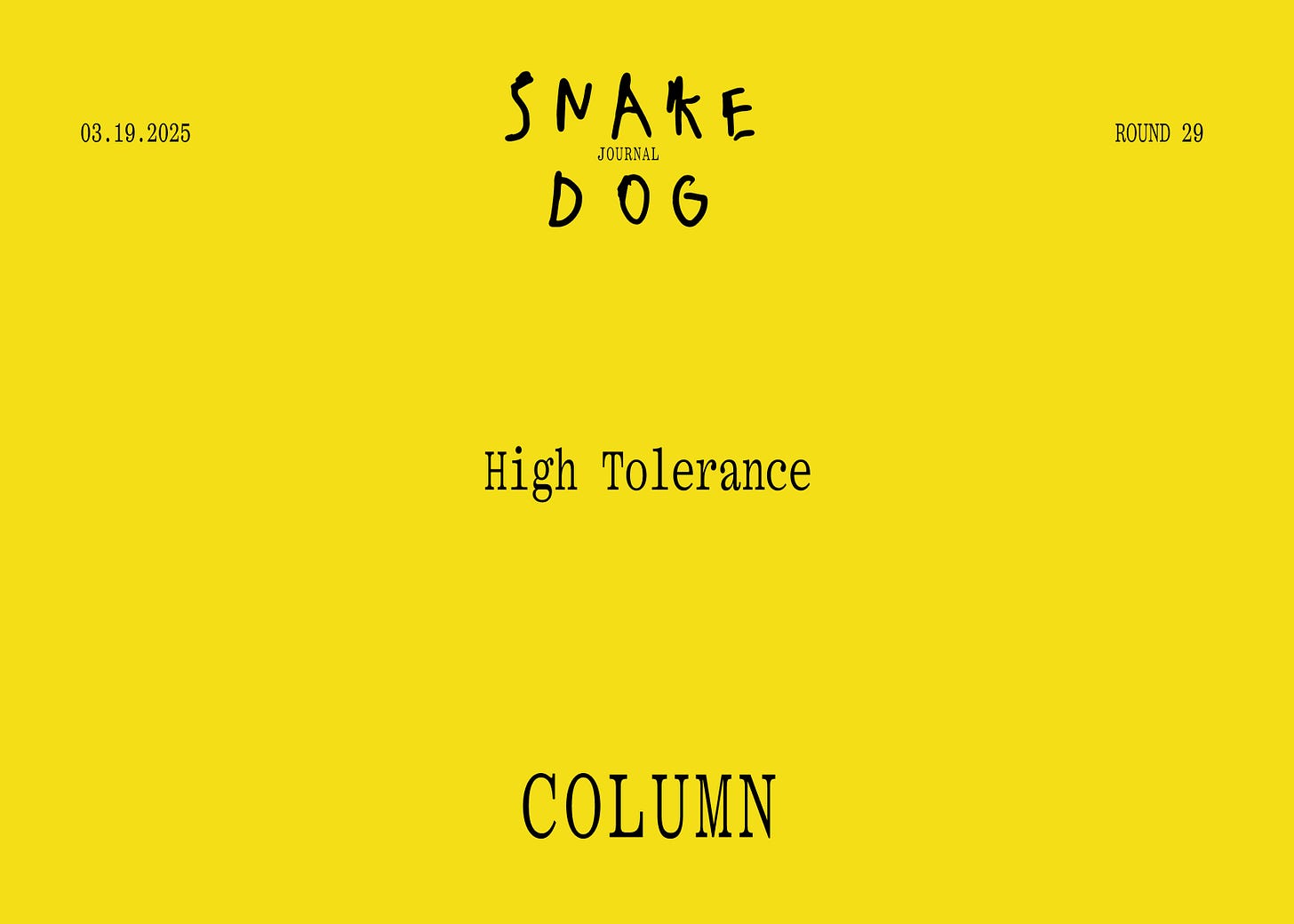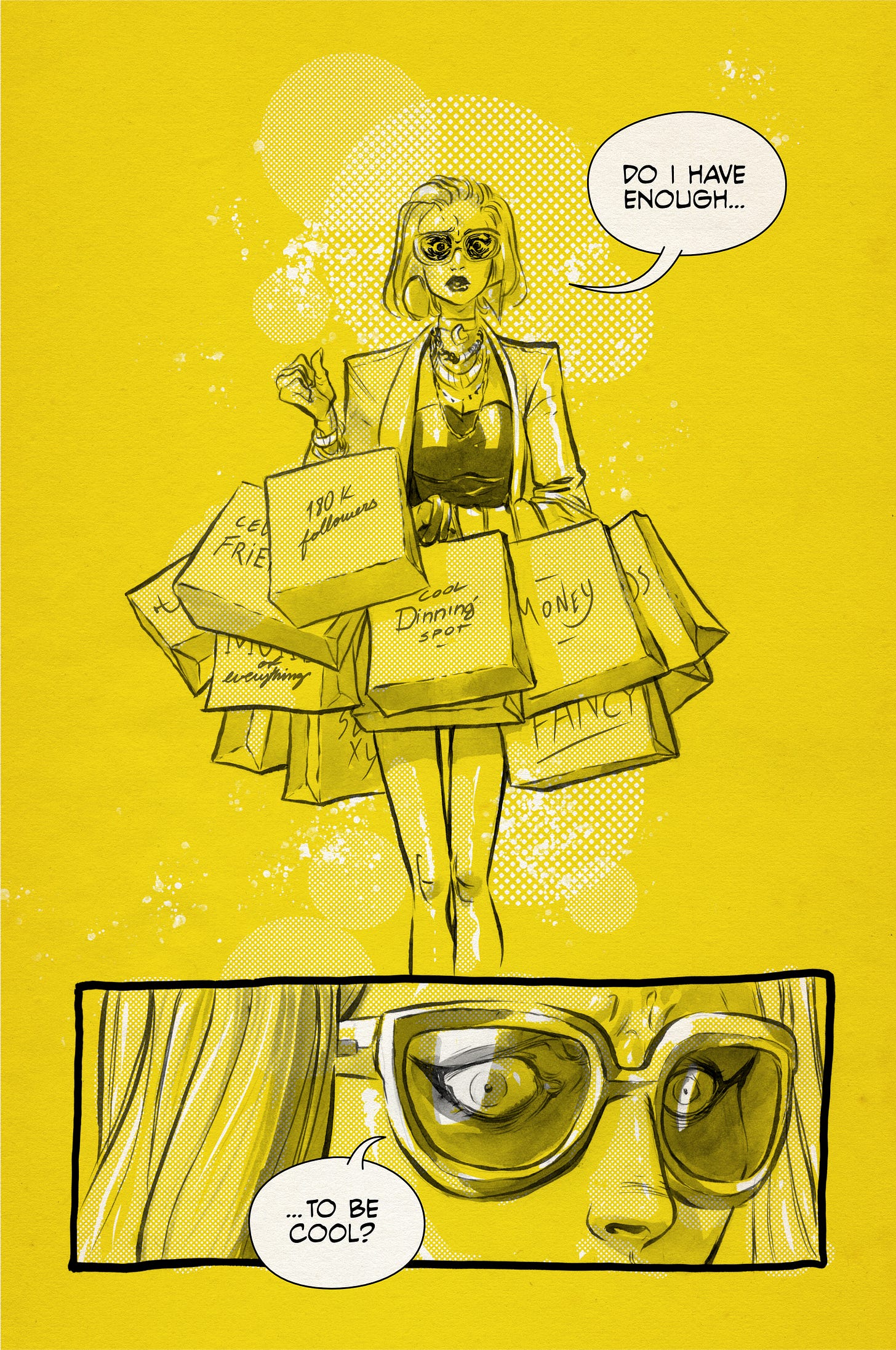HIGH TOLERANCE
A proposal for a new definition of “cool”
A common refrain among the newly sober (or those considering sobriety) is, “But if I don’t drink, I won’t be cool anymore.”
In my experience, that’s been false.
The coolest people I know are sober. They’re indifferent to trends, not people. They’re generous. They make my kid laugh. And they are often cool enough to stand up in front of a room full of people and share about just how cool they haven’t been, aren’t, and never will be.
Now, I imagine some may be thinking, how is Hoka-wearing middle aged dad with a sparsely-read Substack going to lecture me on what is and isn’t cool?
Hey, man, I’d rather hear it from Tom Ford (dream Snake Dog Journal interviewee #1) or Lana Del Rey (dream Snake Dog Journal interviewee #2), too.
But I must say: Ten years into sobriety, I’m cooler than ever.
And it’s not my well-honed air of aloofness and perpetual dissatisfaction. That kind of “cool” is closer to what Jung would call “the persona” or “the actor’s mask.” That kind of “cool” is a hedge against the discomfort of being a frightened animal in a polite society. It’s a defense mechanism. And, it’s fake. Oh, you think yours isn’t?
No, it’s my ability to take my proverbial lickings and keep on proverbially ticking. It’s my capacity to ache like I ache and keep on aching.
Fundamentally, cool is about tolerance. Distress tolerance to be specific.
Distress tolerance can be defined as an individual’s "perceived capacity to withstand negative emotional and/or other aversive states (e.g. physical discomfort), and the behavioral act of withstanding distressing internal states elicited by some type of stressor."
Alcohol—and its anxiety-numbing effects—certainly create the impression of dissolving those aversive states.
But if you drink like I drink, eliminating one aversive state with one Cazadores leads to ever more aversive states and ever more Cazadores. It’s like the Droste effect. Look closely and you’ll see me, nostrils orange rimmed with Adderall, newly in love, and crawling—with the help of the nice bouncers—out of the Body Shop onto Sunset Boulevard at 6 am on a Tuesday morning, over and over again, for all eternity.
It was that kind of incomprehensible demoralization that led me to sobriety. But if I picked up tonight, it’s not the shame induced by the things I would probably (surely) do that I would be most afraid of. It’s the yearning. The incessant, oozing, jaundiced longing for things to feel different than they feel and be different than they are. Wherever I was, whomever I was with, whatever I was doing, I was wanting, wanting, wanting. And that’s the furthest f*cking thing from cool there is, whether you’re at The Chateau or living on the sidewalk down the street.
Of course, the womanizing, hard drinking, taciturn archetype of cool shaped by 20th century literature and fashion and film hasn’t aged well. And despite my best efforts, I never really had the constitution to achieve that kind of “cool.” Maybe it was the black outs. Or maybe it was the not being able to shut the f*ck up. Or maybe it was the IBS. I guess we’ll never know.
A lot of what passes as “cool” was actually created by an advertising industry which has a few cool people in it. But let’s be honest. Not many.
For a long time, though, I really bought into what they were selling. As a result, my definition of cool was something like: “Creativity plus carelessness with life. And cigarettes. Might punch you. Maybe French.”
But today, as far as I’m concerned, the higher one’s distress tolerance, the cooler they are. French or not. This, perhaps, should be obvious. The term, “keep your cool” telegraphs the idea of distress tolerance. And “losing your cool,” essentially, is squandering the capacity to tolerate discomfort, at which point things have a tendency to unravel quickly, whether someone is sober or not.
The implication here is that cool is—like all things—impermanent. We can hold onto it. Unless, of course, we hold onto it too tight.
Cool, like sobriety, has to be worn loosely. And, like any fashion piece, it’s all in how you wear it. Uncool can, of course, shine through the most stylish ‘fits.
And it’s not about being comfortable in your own skin. It’s about tolerating the discomfort of even having skin in the first place. And if you can’t do that, even Jil Sander can’t help you. Sorry.
Over the last ten years, I’ve found that craving is the language of distress. It speaks in tongues. And its whispering wantings come in waves. Surfing those waves—or perhaps letting them pummel me into the beach—is the painful path I take to nirvana. I’ll let you know if I ever get there. In the meantime, I’ll simply do whatever it takes to keep that first drink just beyond my reach.
But I’m certain of one thing. If I did reach for that drink, the cause wouldn’t be an inability to tolerate the world around me.
It would be an inability to tolerate myself in it.
I’m in my mid-40s now. Want to know where the cool kids I came up with are now? They’re either totally immersed in their work or they’re totally irrelevant. They’ve either learned to give freely of themselves or they’re still on the take. And miserable. The rest are dead. They couldn’t tolerate the distress. Or wouldn’t.
So, if you’re thinking about getting sober and worried about losing your cool, don’t stress. You probably never really had it to begin with.
Illustration by Alex Lins


